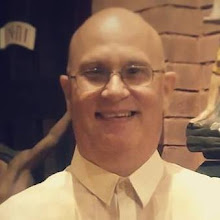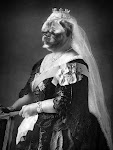Wednesday, December 28, 2022
Three Best Recordings of the Year # 2 Steve Reich
Tuesday, December 20, 2022
Saturday, April 09, 2022
A Breath of Fresh Air: The 2022-23 Classical Symphonic Music Season in Kansas City and an Update!
Yes, my first blog entry since 12/2016. Even then there was only one for the year. Has it been that long? Guess so. Lots has happened since then.
1) I just kind of lost my muse; writing became forced and a chore. I would write something and then throw it out, unsatisfied at my ability to put thoughts to paper. I was doing some occasional writing for a web magazine but quit when a format change was made. Was just too much for me. I thought of going back and doing just topics of interest or musing/rants about life but that didn't work either. I was washed up.
2) Work at my former job got nuts. Lots going on, people always wanting something and never satisfied. I was so tired; I had no time to write.
3) Late 2019 I had a small stroke. It was not huge by many standards but affected by walking and balance. I had been suffering from stomach issues too, which just knocked me for a loop. This guy was getting old.
4) In April 2020 I had to retire, just as the Pandemic played havoc on live concerts all over theworld. There was nothing to write about.
So now, the concert world is getting back to business, we hope.
In KC, we are upon the last season for Kansas City Symphony Music Director Michael Stern, who is leaving after 18 eventful years. We got to hear a lot of great music during that time, witness the orchestra grow in stature and make some acclaimed records for Reference Recordings. Starting his tenure, Stern programmed much new and under-performed music. But as time went on, the repertoire settled on the standard classics, with scattered newworks here and there, most notably the wonderful works of Johnathan Leshnoff. I found myself less motivated to attend.
The 2022-2023 season features several guest conductors, many of whom are likely "trying out" for the position of musicdirector. Few are familiar to me, and I am still an avid listener. The guests seem to be bringing new and exciting works, most never heard here before to my knowledge.
Stern contributes the wonderful, seldom heard choral elegy "When Lilacs Last in Dooryard Bloom'd" written by Paul Hindemith in 1946, one I have not heard live. Walt Whitman wrote the poem in memory of Abraham Lincoln, when the country was still in mourning over his assassination. Hindemith used the poem to commemorate the death of Franklin Roosevelt. Moving, powerful, a profound work of genius, full of American spirit and pathos. Definitely hearing this one.
Guest conductor Teddy Abrams programs two incredible newer works, Caroline Shaw's "The Observatory" and Missy Mazzoli's "Violin Concerto" with Jennifer Koh as solo. Shaw's work, inspired by a trip to the Griffith Observatory in LA, is chaotic, colorful, calm and full of symphonic structure. Mazzoli's concerto was written for Koh in 2022. This will be one of the earliest performances of the work. Subtitled "Procession," the violin leads the ensemble through a series of escapades and healing spells. Not heard yet, but should prove to be a winner, as Mazzoli's music so often is.
Thomas Wilkins (one I have heard of as the long time Music Director of the Omaha SO and currently the Hollywood Bowl SO) brings us Samuel Coleridge-Taylor's "Suite from Hiawatha" drawn from his epic triptych "Song of Hiawatha" along with Gershwin and Nielsen. So admired was Coleridge-Taylor in the early 1900's that he gained the nickname "The African Mahler". Certainly one to hear.
Other notable works include Ligeti’s “San Francisco Polyphony”, Mason Bates’ “Garages of the Valley”, the late Polish Composer Grazyna Bacewicz’s “Overture” and Billy Childs’ Saxophone Concerto (a KCS co-commission,) both conducted by Ruth Reinhardt, plus Stern Leading “Five Freedom Songs” by Jessie Montgomery (another KCS Co-commission, Carlos Simon’s “AMEN!” and the Percussion Concerto by KCS favorite Adam Schoenberg.
Stern also conducts Amer’ican by James Lee II and “Jeder Baum Spricht” (Every Tree Speaks) by Iman Habibi early in the season.
Now….COVID….STAY AWAY!
But the biggest event I am looking forward to is the Kansas City debut of Marin Alsop with her Orquestra Sinfonica Do estado de São Paulo and a program of Rimsky-Korsakov’s “Scheherazade” and some wonderful, seldom heard works by the prolific Brazilian Hector Villa-Lobos.
We hear selections from “Bachianas Brasileiras No. 4 one of his series of works in homage of Bach, with a Brazilian flare (hopefully the gorgeous opening string only chorale Prelúdio (Introdução), the charming “Harmonica Concerto” and the exciting, more Brazilian folk inspired Chôros No. 10 ("Rasga o Coração") (Rend the Heart.)
The Choros, a favorite piece of mine, is scored for chorus and orchestra with a colorful, slower first half and a rowdy choral folk song 2nd half. Just exciting, rhythmic and a work of genius. So happy to hear Villa Lobos played in Kansas City and knowing that his works continue to be recorded as well, with a new Symphony cycle in progress. Know where I’ll be on October 10th!
Join me! It is so gratifying to see such diverse and new programs next season!
Sunday, December 18, 2016
A Short Dozen of the Year's Best CDs, 2016
In no order in particular:
1) Gounod: Complete works for pedal piano and orchestra
Roberto Prosseda, pedal piano;
Howard Shelley, Orchestra Della Svizzera Italiana Hyperion CDA67075
The pedal piano, popular in the late 1800's, is an impressive contraption meshing two pianos together with a pedal board much like an organ. Roberto Prosseda is the foremost proponent of the pedal piano and shines in this interesting and excellently recorded disc. This is volume 62 of the indispensable "The Romantic Piano Concerto" series on Hyperion which has brought back some incredible yet forgotten jewels from the Romantic era.
2) Martha Argerich "Chopin: The Legendary 1965 Recording"
Martha Argerich, piano
Warner Classics 5568062
This recording first became legendary because it was not available for years. Finally released in 1999 it lived up to its hype. Chopin is not always my first choice in listening, but Argerich blows the cobwebs off the music and brings it to life. Dusting this one off (literally) revealed anew Argerich's superb combination of steely technique and consummate musicianship.
3) Post-Haste Duo "Beneath a canopy of angels ... a river of stars."
Sean Fredenberg, Saxophones, Javier Rodriguez, Bassoon
Aerocade Music AM001
A bassoon and saxophone duo? Really? Yes, and it works just fine, thank you. A highly entertaining and inventive program so you just gotta hear this one! See my whole review on I Care if you Listen.
4) Charles Ives Piano Sonata # 2 "Concord, Mass. 1840-1860" Aaron Copland Piano Sonata
Easley Blackwood, piano
Cedille Records CDR900000 005
I love this work. Much of Ives leaves me cold, but the "Concord" (along with the 4th Symphony which shares much in style and form with the sonata, The Symphony: Holidays and a few others) is a masterpiece in the truest meaning of the word. Blackwood is an accomplished composer (listen to his symphonies sometime) as well as a formidable pianist. Blackwood brings out the inner voices and quirky but often breathtaking harmonies and, importantly, has some fun with the piece when required. A fine performance of the seldom heard, knotty Copland is a perfect filler. This is an older recording (1991) that I just got around to exploring this year.
5-7) Ben Johnson The Ten String Quartets
Kepler Quartet
New World Records 80637-2 Quartets 2, 3, 4 & 9 (2006)
New World Record 80693-2 Quartets 1, 5 & 10 (2011)
New World Records 80730-2 Quartets 6, 7, & 8, "Quietness" for quartet and narrator (2016)
I ran into Professor Johnston a few times at the University of Illinois in the late 70's. This music crazed but musically untalented psych major (organizational and industrial) regularly studied at the music library and thus occasionally rubbed elbows (including getting smashed drunk with a soon-to-be famous singer, no I will not name the guilty party) with the esteemed faculty and students. Johnston was famous then, as now, for using microtonal techniques and influences of Harry Partch in his works. His quartets, written between 1951 and 1995, are his most familiar works, if you can call them that. The final disc features the world premiere of Quartet # 6, alleged to be the most difficult quartet in the repertoire. It, along with most of the other works, defies description by this amateur. Suffice to say, all are totally absorbing works that transcend their frightful complexity.
There may be more than that out there, I am probably forgetting one or two discs, but I am leaving it at that. If I remember, I might add one or two.
See you around sometime.
Wednesday, December 23, 2015
Baker's Dozen Best CDs, 2015 Edition
Here it is, for all it is worth, my list of best CDs of 2015. Everyone seems to do it, so why not? Since it is my list I make the rules, thus some of these are discs that have been released earlier but I first encountered this year. Fair enough?
In further news, no Havergal Brian this year but we have Handel and Vivaldi instead. Those who know my listening habits might know those two masters are not often on my list, but two great recordings changed that this time around. There are, as usual, discs of 'new" music, 5 out of 13, about a right mix.
Happy listening, there is something for all here from Vivaldi to Gibson.
Edward Burlingame Hill Symphony # 4, Concertino # 1 for Piano and Orchestra, Concertino # 2 for Piano and Orchestra, Divertimento for Piano and Orchestra
Monday, July 13, 2015
ArtIfacts: Recent Chamber Works by Mara Gibson
Rapture of completion (as a child reaches
into a cabinet of sweets). Though,
Now he thinks perhaps the music’s
More like a map of rain hitting water—
Wednesday, July 01, 2015
Nadia Shpachenko: Woman at the "New" Piano
Nadia Shpachenko, Piano
Genevieve Feiwen Lee, Piano and Toy Piano
Reference Recordings FRESH FR 711


